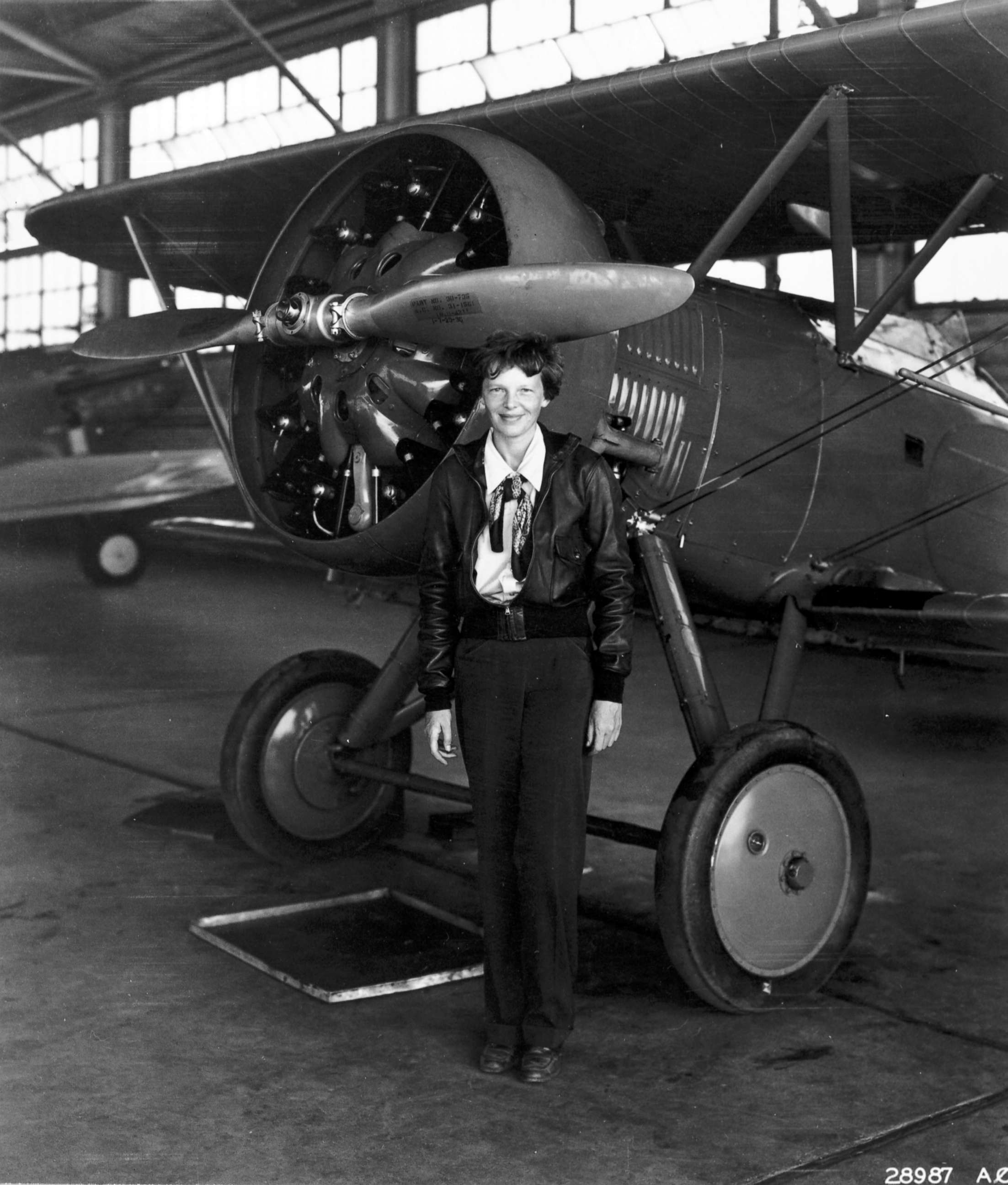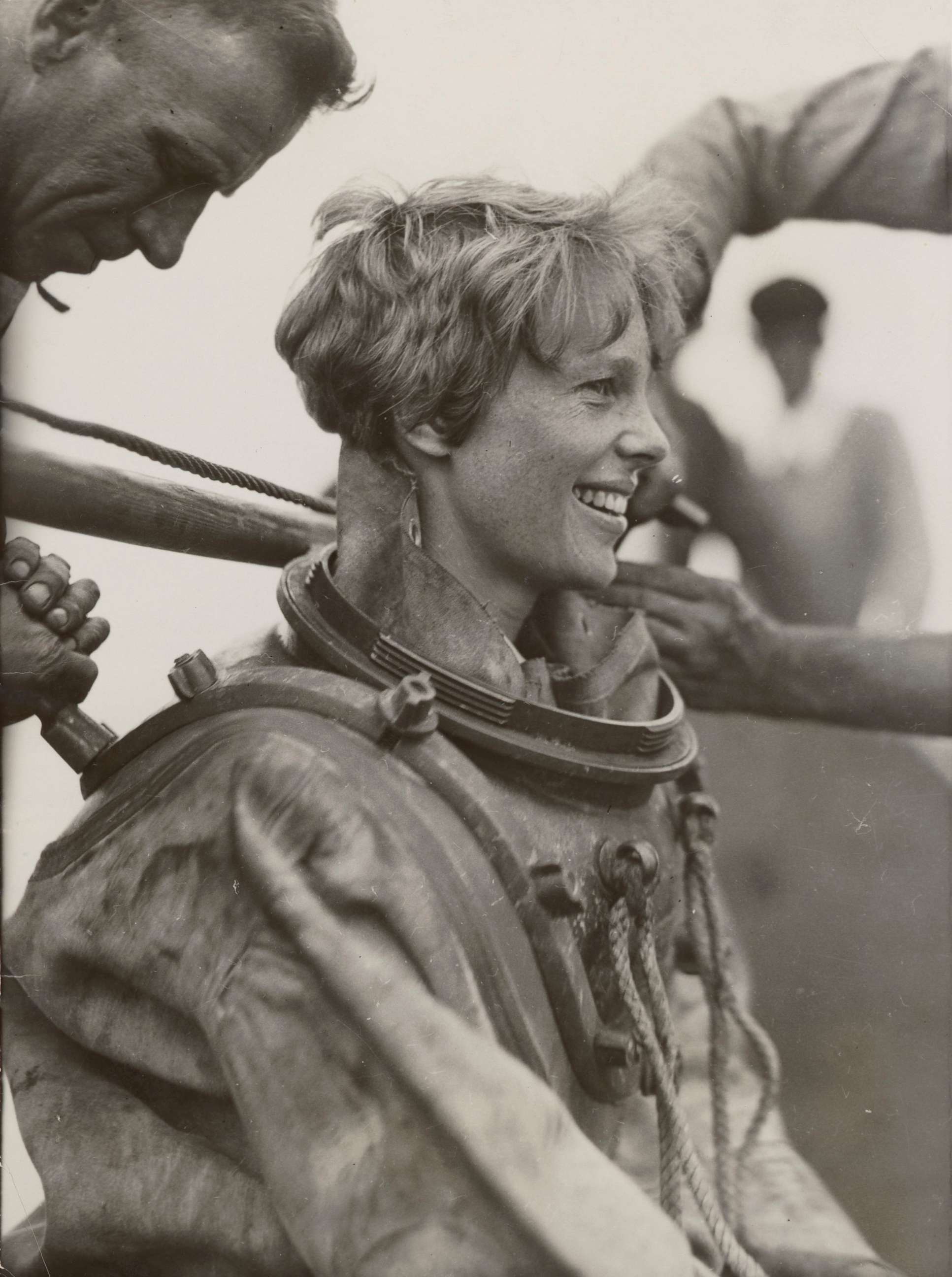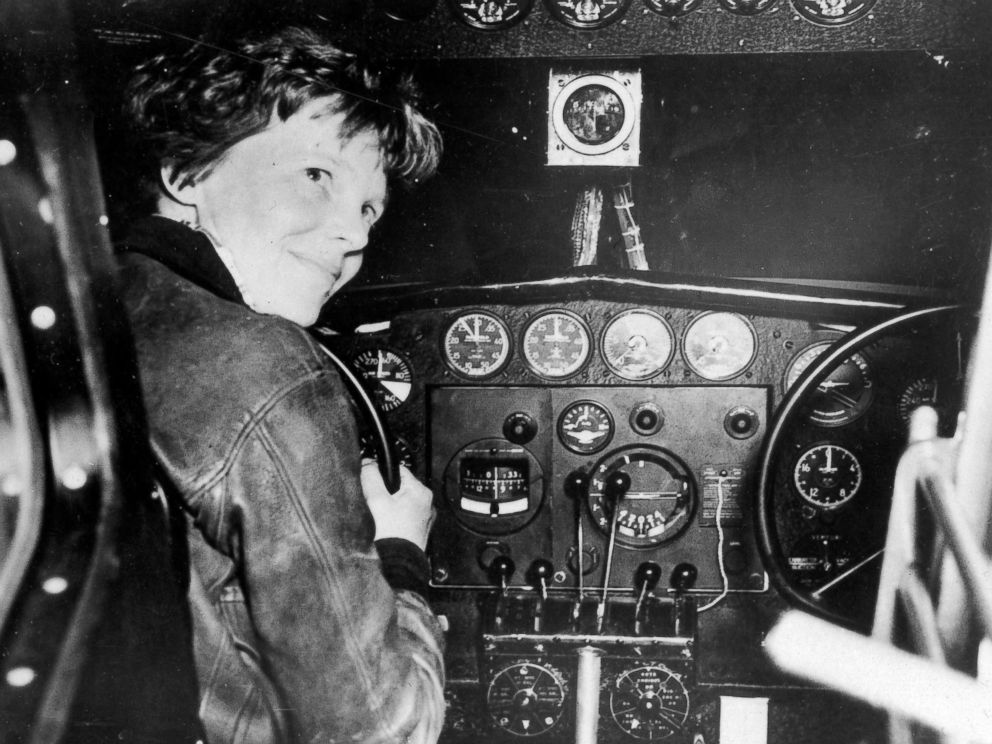Documentary says Amelia Earhart may have survived crash landing in the Marshall Islands
The photo is believed to show Amelia Earhart and her navigator, Fred Noonan.
— -- A photograph appearing in a new documentary is being touted as possible proof that famed American aviator Amelia Earhart and her navigator, Fred Noonan, may have survived the crash landing of their final flight more than 80 years ago.
The History channel's new special, "Amelia Earhart: The Lost Evidence" contends that the photo depicts Earhart and Noonan after they crash-landed in the Marshall Islands in the Pacific Ocean. The History channel said the photo was discovered in the National Archives as part of a top secret Navy file.
In the fuzzy photo, two people that the History channel claim are Earhart and Noonan are on a dock with several other people. The person who appears to be a woman, possibly Earhart, has her back toward the camera as she appears to gaze at a barge, The Associated Press reported. Only a small portion of her face is visible.
However, Ric Gillespie, the executive director of the International Group for Historic Aircraft Recovery, told ABC News that the woman with her back to the camera in the photo is not Earhart. Her hair was too long.
"What you have here is a picture of a bunch of people on a wharf," Gillespie said, adding that there is "nothing to support the contention" that the photo contains Amelia Earhart.

In the special, which airs Sunday, Shawn Henry, a former FBI executive assistant director, investigates new evidence related to Earhart's disappearance.
The film argues that Earhart and Noonan were picked up by the Japanese military after they crashed in the Japanese-held Marshall Islands and that Earhart may have been held prisoner after she was presumed to be a spy, according to The AP.

One common theory about what happened to Earhart and Noonan is that they crashed and sank in the South Pacific on July 2, 1937, as she attempted to become the first female pilot to circumnavigate the globe. She was the first woman to fly solo across the Atlantic Ocean.
In June 2015, newly rediscovered footage, believed to be from the spring of 1937, showed Earhart in what may have been the last recording of her before she departed for the final flight.

The History channel documentary also explores whether there was a cover-up in the investigation into Earhart's disappearance, since the U.S. government closed the investigation just two weeks after she and Noonan went missing, according to the AP.
Henry said the documentary describes "a world-famous aviator who got caught up in an international dispute, was abandoned by her own government, and made the ultimate sacrifice," adding that Earhart "may very well be the first casualty of World War II."
The documentary suggests that a decades-old theory that Earhart and Noonan crashed in the Marshall Islands and survived —- based on accounts of locals who claimed to have seen her —- could be accurate.
The National Archives told ABC News that they are searching for the photo in their files and will continue investigating.
ABC News' Darren Reynolds contributed to this report.




